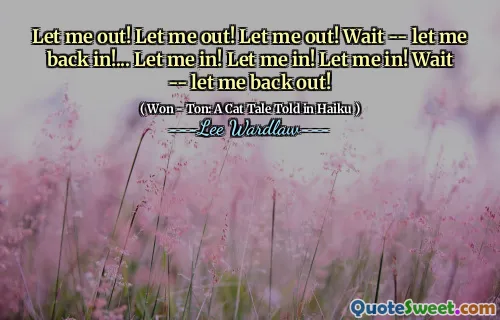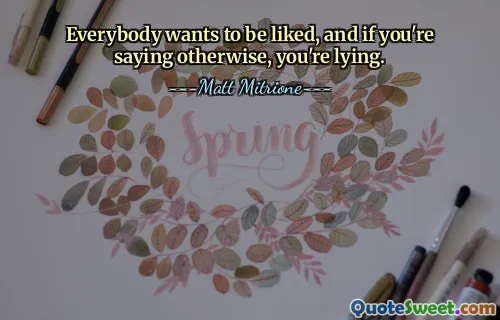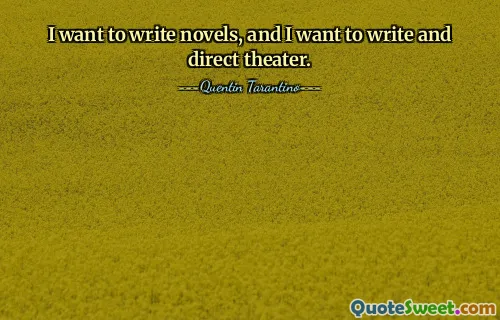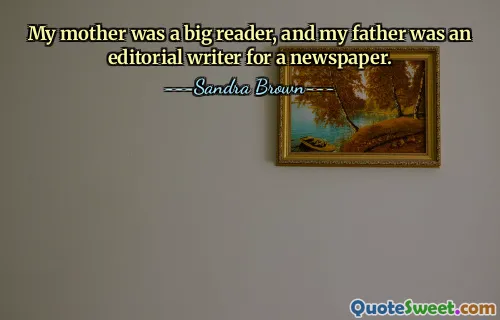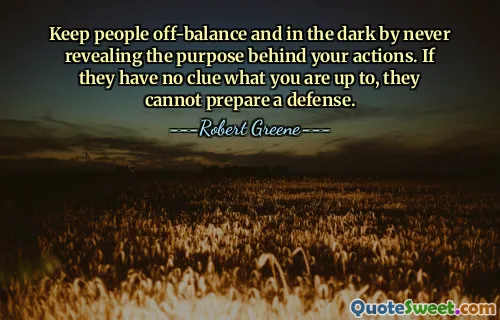
Let me out! Let me out! Let me out! Wait -- let me back in!... Let me in! Let me in! Let me in! Wait -- let me back out!
This quote vividly encapsulates the intricate and often conflicting emotions experienced in moments of desire for liberation and the subsequent resistance to change. It mirrors the internal tug-of-war that many individuals face when contemplating stepping out of their comfort zones versus retreating into familiar surroundings. The initial insistence for freedom—"Let me out"—reflects a longing for independence or a break from constraints, whether they be emotional, social, or situational. However, the subsequent hesitation and plea to "wait" and "let me back in" reveal an underlying fear of the unknown or discomfort that can accompany change. This push-and-pull dynamic mirrors human nature: the excitement of new experiences and the safety of the known often coexist in a delicate balance, influencing decisions and reactions. Interestingly, the mimicry of a dialogue suggests that these internal conflicts are not unique to any one person, but rather universal, resonating through various stages of life and different circumstances. It captures the complexity of human psychology where desires for freedom and the comfort of familiarity are constantly negotiating within the mind. Such internal dialogues can serve as a reflection of the anxiety, hope, uncertainty, and even humor of human experiences. Recognizing this cycle helps us understand the importance of patience and self-awareness when navigating change, reminding us that feelings of wanting to escape or retreat are natural and fleeting, often part of the process toward growth or understanding. In literature and art, these conflicting sentiments evoke empathy and connection, illustrating that no one is immune to the oscillation between liberation and security.
